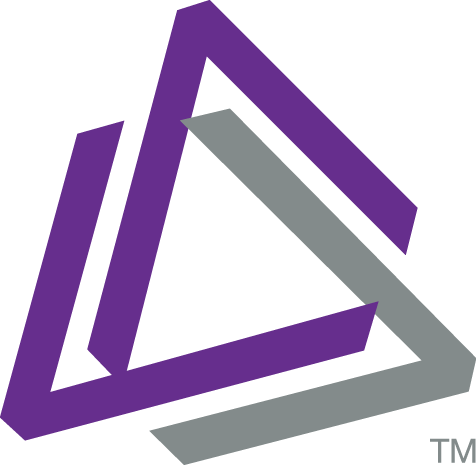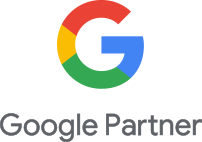FAQs
Frequently Asked Questions
If you’re left with some unanswered marketing-related questions, you’ve come to the right place.
Advertising
What is Search Engine Marketing? (SEM)
Search Engine Marketing is a digital marketing strategy through paid advertisements that is used to increase the visibility of a website on search engine result pages. These advertisements can be executed through search engines, social media platforms, or various 3rd party channels.
Where can I advertise on the internet?
A user can advertise online (or SERPS) through various advertisement methods. Examples include search, display, shopping, video, email, and more! If you’re looking to get started, you have a few options. If search engines are where you think your brand can flourish the most, Google Ads& Microsoft Advertising are available at your disposal. Social media is a great alternative option if you’d like to expand your reach elsewhere. For manufacturing, Vive recommends LinkedIn for a more granular advertisement approach.
Is my spend is worth the investment?
When evaluating if your business’s daily, weekly, or monthly budget is worth the investment, it’s important to monitor the user engagement that your advertisements or website is receiving. Identifying a conversion is a crucial step to understanding the user(s) engagement and activity. A conversion can be anything you want it to be, such as a website visitor visiting the Contact Us page, filling out a form, or signing up for a newsletter. So, begin understanding and tracking how users interact with your website and determine if those users are turning into business opportunities or qualified leads.
What's better, Google Ads or Bing Ads?
There isn’t necessarily a right or wrong answer to this question. Analytically, Google receives more visitors than Microsoft Bing, Yahoo, AOL, etc. However, it all depends on which platform the targeted audience spends their time on Google Analytics is an excellent resource for identifying sources of website traffic. Google Analytics provides data that illustrates if website traffic is coming from mediums such as Google, Bing, DuckDuckGo, Baidu, etc.
What is an impression?
An impression is the number of times a URL is displayed in a search engine. For example, each Google results page includes ten results plus advertisements. If a user were to Google “injection molding” and your company’s URL was displayed on the first page, that is an impression.
What's CTR?
A CTR or click-through rate is the percentage of how many users clicked on the URL displayed to them. Impressions/Clicks = CTR. More often than not, companies use this metric to determine the quality of their SEO or advertisements.
Digital Marketing
Do I need a new website?
This is one of the most common questions about digital marketing success. More often than not, if you’re asking this question, the answer is yes. With a strong digital presence becoming more crucial for brand visibility and recognition, a new or refreshed website is the perfect opportunity for your brand to introduce itself. Think of your website as a virtual handshake or opening the door for someone. If your website lacks aesthetic appeal, relative content, updated imagery, and pertinent information, it’s probably time for a new or refreshed website.
Another route to identify if a new website is necessary is to analyze traffic and user engagement statistics. Google Analytics and Google Search Console are resources that help paint the bigger picture. The following metrics are important when interpreting these data points: overall users, user time on page, pages visited per visit, and bounce rate.
Should I be blogging?
You don’t HAVE to, but you really should. Keywords, key phrases, and long-tail keywords are how websites are displayed in search engines. Blogs offer a free and purposeful way to include more keywords on a website, and Google recognizes that.
Let’s say a user searches “who has available resin near me” on Google. If you’re a resin distributor or supplier looking for more business, I’m sure you’d like to answer this question! Blogs give you this opportunity. Your blog could be titled “Resin Shortage? We Got You Covered.”In this blog, your company could explain areas where you can help and what resin you have available. Even if the resin does not apply to their needs, now they know your brand and have visited your website.
How can I get more traffic to my website for free?
Re-visit your website’s SEO. Are the keywords and content aligning with what you want to show up for in a search engine? Does each page have a title tag and meta description? SEO will be the most essential and highly successful way to increase website traffic.
Increase activity and cadence on social media. If you don’t have social media accounts, create them today. They are FREE! This is a phenomenal way to provide value and thought leadership while creating the narrative that your brand is a subject matter expert.
Blog, blog, blog! Blogs work similarly to social media, allowing your brand to offer content that resonates with your audience. And again, it’s FREE! Creating a blog page that touches on relative industry news, topics, or things going on in your organization will increase search engine visibility.
Start e-blasting. Generate a list of users in your audience you want to speak to and share valuable information with. Email marketing platforms provide performance metrics like clicks, opens, and open rates once all emails have been delivered. These metrics make a list of interested user(s) more obtainable.
Where can I find data and analytics on my website?
Website analytics can be found on Google Analytics& Google Search Console. If you’re looking for information on the company’s Google profile account, Google My Business also provides various user engagement metrics. If Google is not the primary source of traffic, Bing Webmaster Tools is another applicable resource available free of use.
What are my competitors doing?
If you’re intrigued by what your competitors are doing, look them up on whichever search engine you prefer. From this market research, identify keywords or the utilization of advertisements that are being promoted. Competitor branding, messaging, and content efforts can be established from this research.
What is content marketing?
Content marketing is a specific approach focused on creating value, relative content, and information fine-tuned for a particular audience. The ultimate goal is driving profitable customer action.
Search Engine Optimization (SEO)
What is SEO?
SEO or Search Engine Optimization is a set of best practices designed to improve the appearance and positioning of web pages in organic search results. With the improved appearance and positioning in the marketplace, the ultimate goal is to rank higher in search engines.
How can my SEO be improved?
Improving SEO can be executed by conducting the following SEO best practices:
1) Optimizing keywords
2) Crafting enticing Title Tags & Meta Descriptions
3) Internally linking throughout website
4) Backlinking to respected websites or domains
5) Improving page speed of website and all web pages
6) Adding alt txt to all images.
Why is SEO important?
SEO is essential because websites and algorithms are constantly updated. If your website is not SEO optimized, you have an increasingly diminishing chance of appearing in the top search engine spots. Even if your product, services, or offerings are a better fit for the user’s search, if SEO best practices are not utilized, it does not matter.
What are keywords?
Keywords in SEO, or Search Engine Optimization, are specific words or phrases that people use to search for information, products, or services on search engines like Google, Bing, or Yahoo.
What resources can I use to enhance my website's SEO?
1) moz.com
2) neilpatel.com
3) semrush.com
What keywords should I be using in my content?
Use keywords that define who your company is and how your company can provide value to the end user. If the correct keywords, key phrases, and long-tail keywords are utilized in your content and copy, web users will have a better chance of stumbling upon your brand with search engines’ advanced algorithms.
Social Media
When is the best time to post on social media?
Vive has found that Tuesdays and Thursdays receive the highest user engagement when posting on social media for a manufacturing audience. Studies show that between 9AM-1PM, social media platforms are at their highest volume of engagement.
Where do I get started with social media?
To kickstart your company’s social media presence and brand growth, begin by clearly defining your goals and identifying your target audience. Choose the right social media platforms, create a well-thought-out content strategy, and plan a consistent posting schedule. Ensure your profiles are optimized, engage with your audience, and use relevant hashtags to boost discoverability. Regularly monitor your performance through analytics and adjust your strategy accordingly for continuous improvement
What is the best social media channel for my brand?
If you’re reading these FAQs, we assume you’re most likely in the manufacturing industry. LinkedIn and YouTube are about to be your best friends if that’s the case. LinkedIn allows you to post content that speaks directly to the professional audience of decision-makers you want. With YouTube, you can reach a broader audience, including engineers, tool makers, machinists, and others who look to learn about processes through video. Facebook, Instagram, and Twitter should be reserved for culture-related posts.
What are common mistakes made on social media?
One of the most common mistakes a social media champion will make on their profile is not speaking to their audience in a way they can understand. Understanding your following base’s demographics, geographical location, and role is pertinent when creating content. Another common mistake is when a company is inconsistent with its social media activity. If establishing your brand as a thought leader, subject matter expert, or resource in a specific niche is the end goal, consistency is key. Users want to be able to rely on your account or brand to keep pushing out information that may be relevant to their needs or inquiries.







